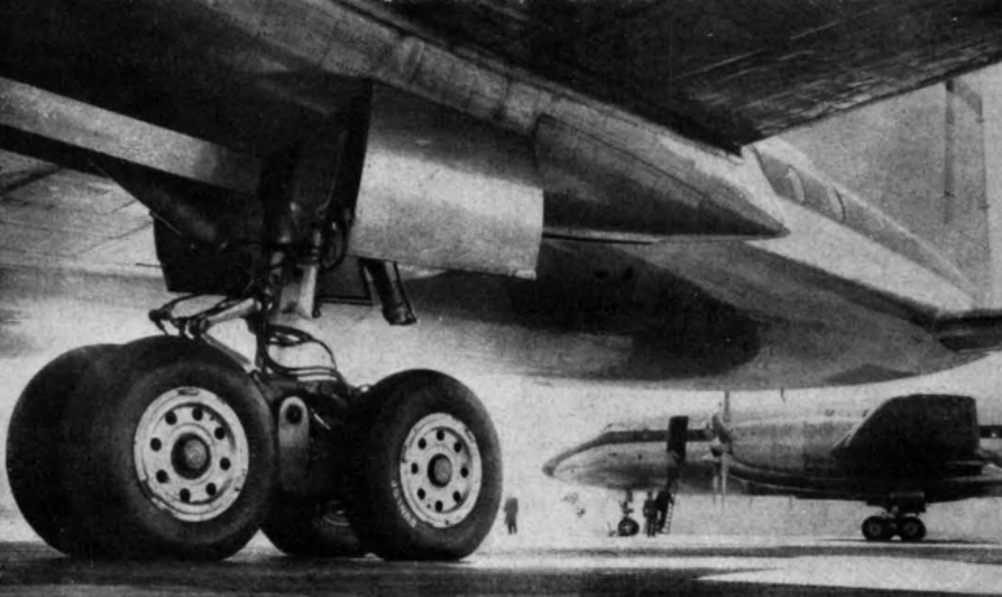The company that started life as The British and Colonial Aeroplane Company might not have got off the ground if founder Baronet Sir George White hadn’t had an encounter with Wilbur Wright in France in 1909.
The meeting helped Sir George to see the business potential of aviation and, with the help of brother Samuel and his son Stanley, used working capital of £25,000 to set up the company’s first facilities in an old tram shed in the Filton area of Bristol.
“The products of that firm and its successors have been prominent in the history of aviation and of this country; the first recorded military’ heavier-than-air flight was made by a ‘Boxkite’, while in the Great War the ‘Scout’ and, particularly, the two-seater ‘Fighter’ earned fame, both being designs of Capt. F. S. Barnwell,” noted The Engineer in its round up of achievements at the company.
After the war the firm was named The Bristol Aeroplane Company, and in 1920 it acquired the Cosmos Engineering Company, which built air-cooled radial engines in Bristol.
“The use of direct air-cooling predicates very complete control of the air flow if satisfactory net thrust is to be realised,” said The Engineer. “An early example of this theme is seen… on the Type 72 racing monoplane, with a ducted spinner and full cowling for the 436hp ‘Jupiter’ IV; the stub exhausts protrude through the cowling.”
The Engineer continued: “Another single-seat monoplane, but with a fixed undercarriage, the Type 138, twice broke the heavier-than-air altitude record in the years immediately before the last war; it was powered by a highly super charged ‘Pegasus’ engine, other versions of which saw extensive civilian service.”
With the same cylinder dimensions but a smaller overall diameter, the ‘Mercury’ was intended for military use, but two were used in a light transport aircraft - the Type 142 ‘Britain First’ - which was 50mph faster than RAF fighters at the time.
From this came the Blenheim bomber which was supplanted by the even faster ‘Beaufort’ torpedo-bomber with twin fourteen-cylinder sleeve-valve ‘Taurus’ engines, from which evolved the ‘Beaufighter,’ with a pair of ‘Hercules’ engines.
READ THE ORIGINAL ARCHIVE PIECE HERE
“This machine remained for year after year the most heavily-armed fighter in service, having a fixed gun complement of four 20mm cannon, to reload which was the duty of a second crew member behind the wing, and six rifle-calibre Browning guns,” said The Engineer. “The airframe afforded an excellent gun platform, allowing kills to be made at such a range as not to imperil the machine, while the disposable load could include bombs, rockets, or a torpedo. A.l. (Airborne Interception) radar was carried in the night fighter role, while the high fuel economy and relative immunity to damage of the air-cooled engines allowed successful patrols across the Bay of Biscay.
Our reporter added that after the war, radically new products were undertaken including single-and tandem-rotor helicopters.
However, the biggest project undertaken was the Brabazon, a passenger aircraft designed to cross the Atlantic ‘in non-stop in luxury’.
“Grossing 290,000lb, it is still the largest landplane ever built in this country,” said The Engineer. “The prototype had eight ‘Centaurus’ engines driving four contra-props through individual transmissions; however, the firm had always striven for engines of the largest power and consequently had diverted much of its effort to turbine power plant.”
The first such project, the ‘Theseus,’ followed the Bristol tradition of emphasising fuel economy to the extent of being designed for a heat exchanger. For the ‘Brabazon’ the ‘Proteus’was developed, which takes after the piston engines, not only in offering high power and long life but also in being comparatively short and fat.

Before a Proteus powered ‘Brabazon’ had been completed the company diverted its efforts to the four-engined ‘Britannia,’ which in transatlantic service grossed 180,000lb.
“However, before the development of even this smaller machine was completed piston engine airliners had been developed to perform scheduled non-stop transatlantic flights,” said The Engineer. “The shorter, earlier versions, used on the Empire routes, were the first turbine machines to enter many latitudes in commercial service and it fell to them to show that the standards of ice toleration established from experience in the northern hemisphere were inadequate.
“Six international airlines use the ‘Britannia,’ which is the only British airliner ever to be in service all round the world; at present utilisation is over 3,000,000 miles a month of revenue flying.”
The company also started to produce guided weapons, whilst on terra firma it manufactured a version of the BMW 327/80 and competition cars.
“lt has been observed, not least by Bristol, that the optimum design of a high performance aeroplane requires integration of the airframe and engines,” The Engineer wrote in its conclusion to the article. “Nevertheless, the firm itself has disintegrated: The Bristol Aeroplane Company, Ltd, is to-day a holding company with a half interest in Bristol Siddeley Engines, Ltd, which includes Bristol Cars, Ltd, and a 20 per cent interest in Bristol Aircraft, Ltd, which, as well as fixed wing aerodynes, makes plastic bodies for cars and motorcycles.”











Radio wave weapon knocks out drone swarms
Probably. A radio-controlled drone cannot be completely shielded to RF, else you´d lose the ability to control it. The fibre optical cable removes...